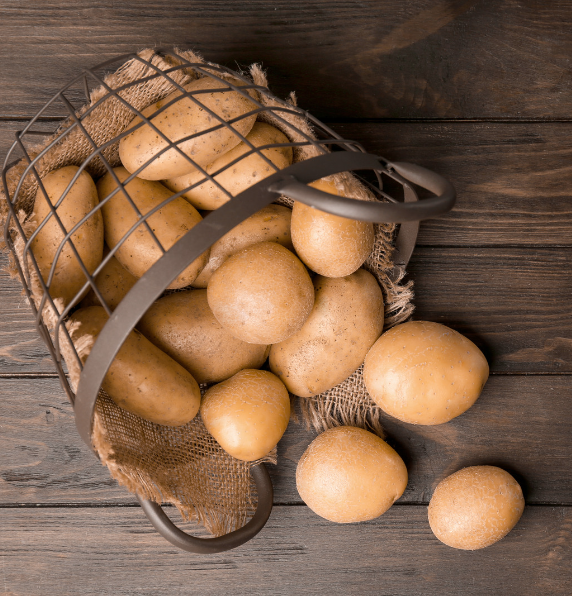
15 Nov Potatoes – A Power Packed Wholefood
In 2021, 87% of Australian households purchased potatoes1, buying an average of 1.7 kg of potatoes per shopping trip. Supply per capita was around 18 kg of fresh spuds (not processed), an increase on the previous year, but still well-below some of the top potato eating countries, such as Ireland, where consumption is around 85 kg a year.
While many factors have contributed to an overall decline in potato consumption in Australia, research has indicated that the major driver is the perception among consumers that potatoes are ‘unhealthy’.
A project was developed and funded by Aussie growers through Horticulture Innovation Australia to dig deeper into the health benefits of spuds – and has confirmed that potatoes really are a great addition to your plate.
So what are the facts about potatoes?
Potatoes are packed with nutrients! Vitamin C, B6, potassium, folate and more2.
Potatoes are often perceived to be high in kilojoules however, they have a lower energy density than most other mealtime carbohydrate foods2.
Potatoes have lower kilojoules per 100 gram serve than pasta, gluten free pasta, white and brown rice and wholemeal bread.
Potatoes are loaded with fibre – with values at 7.7g fibre per serving, which would be classified as an ‘excellent source’ or ‘very high’ in fibre2.
Potatoes are also a valuable source of resistant starch, a nutrient that has been identified as lacking in Australian diets2. Potatoes provide more Resistant Starch in Australian diets than any other food, followed by bananas (Roberts et al 2020). Together, potatoes and bananas account for nearly half of the total Resistant starch intake of Aussies (Roberts et al 2020).
So how can you maximise the health benefits of every bite of potatoes?
- Keep the skin on – A potato’s skin is rich in key nutrients such as Potassium and Vitamin C. More than 50% can be lost when the skin is peeled. Leaving the skin on potatoes not only provides more nutrients but makes them quick and easy to prepare.
- Eat coloured potatoes – Coloured potatoes contain many essential antioxidants which can suppress the damage caused to cells and blood vessels by oxidative stress. This can help reduce the risk of certain cancers, cardiovascular disease and metabolic disorders.
- Steam or microwave – Some cooking methods can alter the nutritional value of potatoes and lead to a decrease in micronutrients, particularly Vitamin C and other antioxidant and minerals. Generally, nutrient retention is better when potatoes are steamed or microwaved, due to relatively lower cooking temperatures and shorter cooking times
- Store and eat your cooked potatoes cold – cold storage of cooked potatoes promotes the conversion of resistant starch (RS) which is important for gut health and lowers the Glycaemic Index (GI), preventing harmful spikes in blood glucose levels.
Why not make a Potato Power Bowl?
Max your nutrition with cooked and cooled potatoes, heaps of colourful vegetables, and protein such as chickpeas, tofu, fish or chicken? Perfect for meal prepping too!
Check out this great recipe for a Lunchbox Potato and Bean Salad on our website:
Lunchbox Potato, Bean and Tuna Salad
References:
- Source: 2020/21 Australian Horticulture Statistics Handbook
- https://www.powerpackedpotato.com.au/contentassets/6365c67c25ae49ba9c1cf8c6f2c60e2f/potato-nutrition-final-approved-241120.pdf










